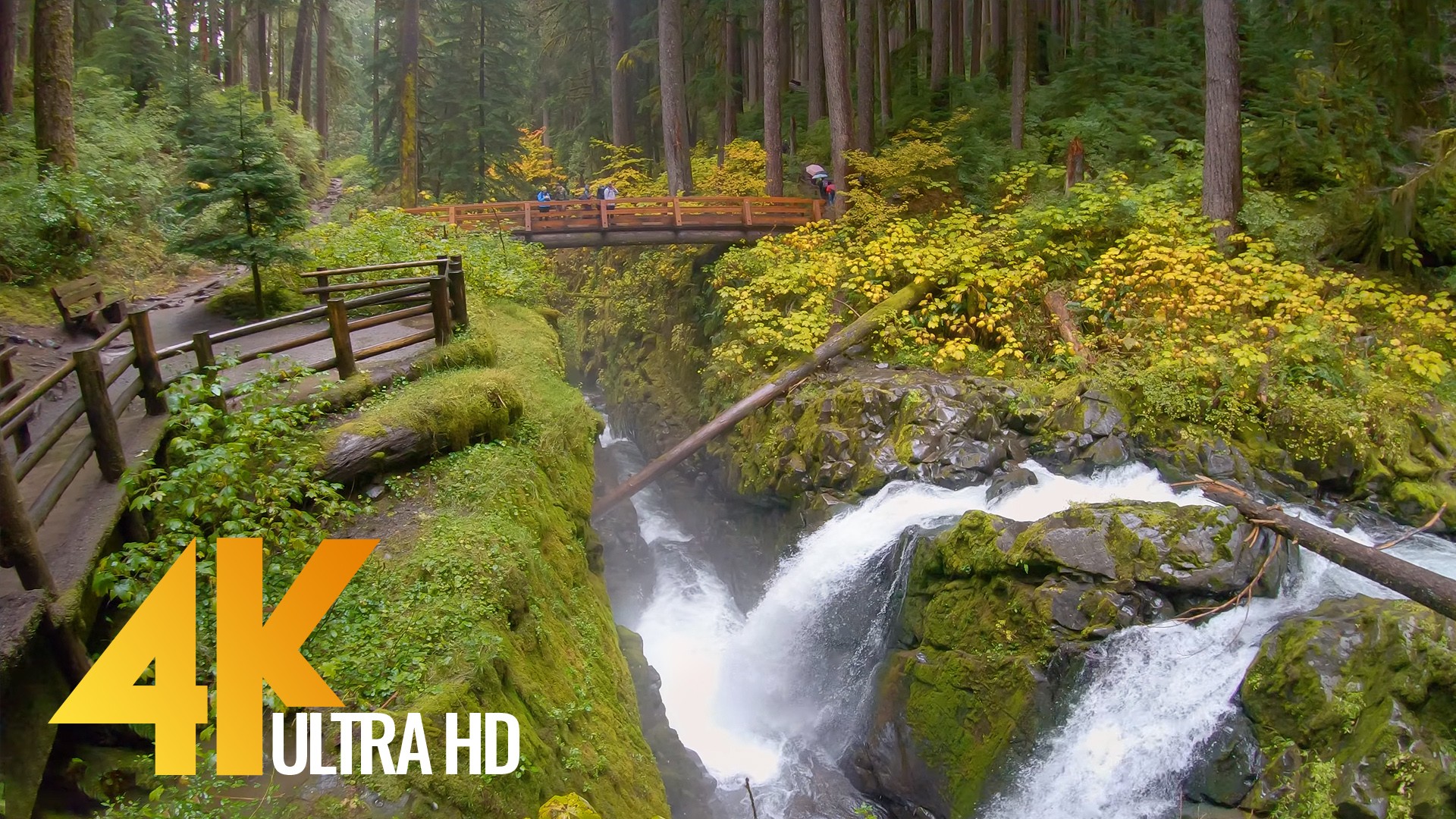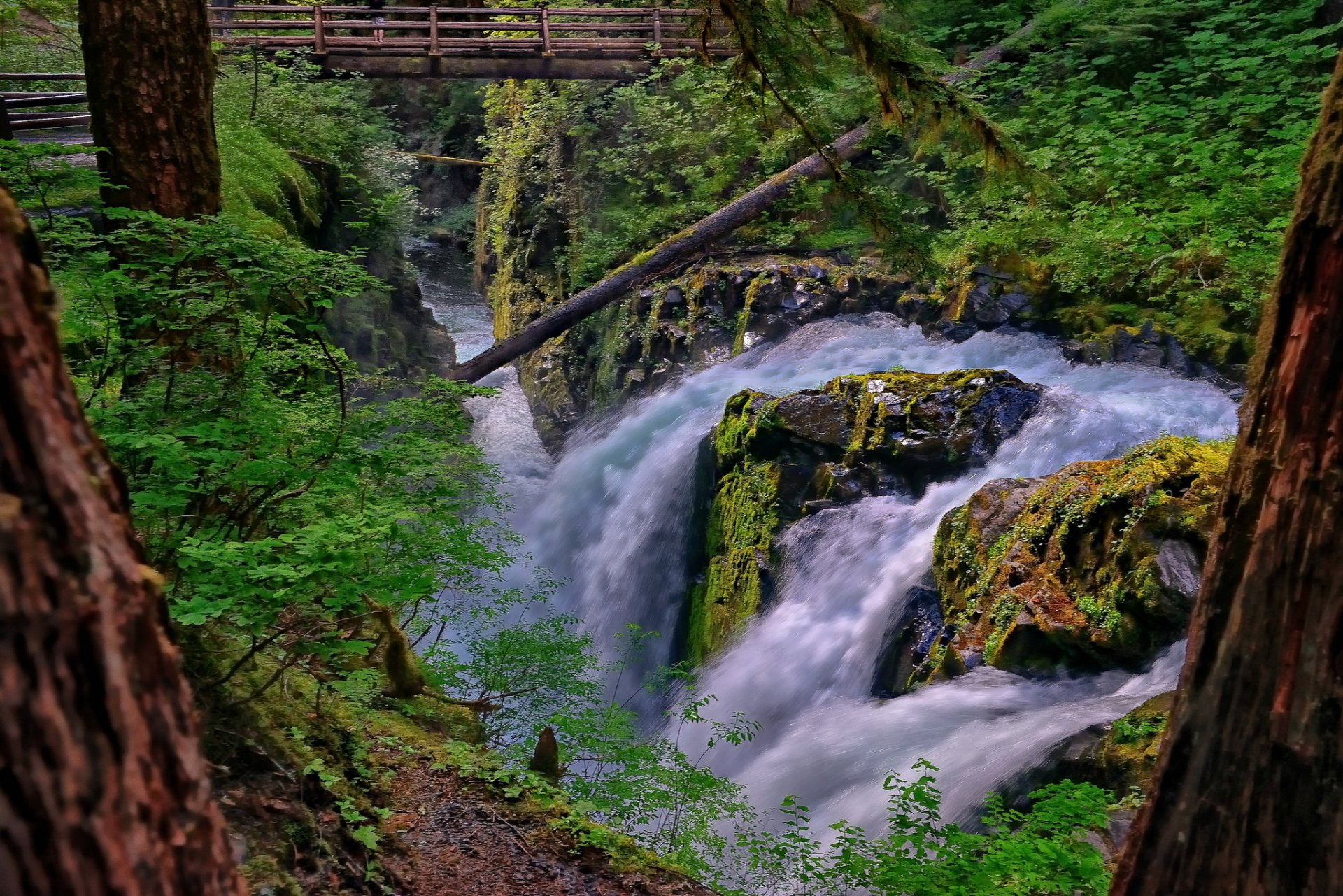

There are two common spellings of the river's name, Sol Duc and Soleduck. The city of Forks is so named due to the close convergence of the Sol Duc, Bogachiel, and Calawah Rivers. Route 101 follows the Sol Duc River for many miles through Olympic National Forest and the Sol Duc Valley to the vicinity of Forks. The forests within Olympic National Park are protected. Most of the forests have been logged at least once. Much of the Sol Duc River's watershed is valuable timber land. Other notable tributaries include Bear Creek, Beaver Creek, and Lake Creek. The Sol Duc River's main tributaries are its two forks, the North Fork Sol Duc River and the South Fork Sol Duc River. The Sol Duc's watershed is the largest of the Quillayute's tributaries, at 219 square miles (570 km 2). Although the Quillayute River is short, its large tributary rivers-the Sol Duc, Bogachiel, Calawah, and Dickey Rivers-drain the largest watershed of the northern Olympic Peninsula, 629 square miles (1,630 km 2). Near the Pacific Ocean the Sol Duc River joins the Bogachiel River, forming the Quillayute River, which flows about 4 miles (6.4 km) to the Pacific Ocean at La Push. About 78 miles (126 km) long, it flows west through the northwest part of the Olympic Peninsula, from the Olympic Mountains of Olympic National Park and Olympic National Forest, then through the broad Sol Duc Valley. The trailhead for Sol Duc Falls is at the end of Sol Duc Road.The Sol Duc River (also spelled Soleduck) is a river in the U.S. Getting to the Sol Duc Falls Trail Trailhead You’ll need a permit to stay overnight in the area.This hike is especially enjoyable on a hot day.Try going in the early morning or midweek for the quietest trail.Don’t forget your National Park Pass for this hike.While you can’t fish right at the falls, if you go west on La Push Road you can access the Sol Duc bank for fishing. You can swim at the hot springs twelve miles down the road from the falls. That being said, it’s a very quick hike- less than 3.2 km roundtrip. Yes, you have to hike to reach the falls. Frequently Asked Questions Do you have to hike to Sol Duc Falls? These falls are easily accessed on a simple nature trail, making them a popular destination.

The cascading water is surrounded by rainforest and empties into a turquoise basin. Sol Duc Falls is a breathtaking waterfall in Olympic National Park.

When you’re ready, you’ll return on the same trail you came in on. Check out all the angles from the various viewpoints available. For the best experience, visiting in late spring tends to see the most vibrant forest and most impressive falls while avoiding the gloom of winter. You’ll hear the falls before you see them.ĭepending on the flow, Sol Duc Falls splits into as many as four different falls as it tumbles 15 m. Thanks to the high annual average rainfall, the biodiversity of this rainforest is exceptional.Ĭross a small creek on a bridge, and then walk the short distance to the falls. You’ll be walking underneath a dense canopy, enjoying the classic coastal temperate rainforest that dominates the park. From the trailhead, take the wide, well-maintained trail through the trees. Note that the road to the trailhead is subject to seasonal road closures, so you’ll want to check its status if visiting in the wintertime.īegin from the end of the road past the hot springs and resort. The spray from the falls can be intense, so a towel can be a handy item to bring.

Photographers frequent the falls, and they’ll want to try and visit on an overcast day or in the morning and evening when the light plays against the water. The trail to reach the falls is extremely short and simple, making them accessible for most ability levels as well as families with young children. Native American legend says that the falls were formed by a dragon, and while we can’t confirm this origin story, they retain their charm and beauty. Sol Duc Falls are simply breathtaking, making it obvious why they’re one of the most visited sites in the park. Route Description for Sol Duc Falls Trail


 0 kommentar(er)
0 kommentar(er)
